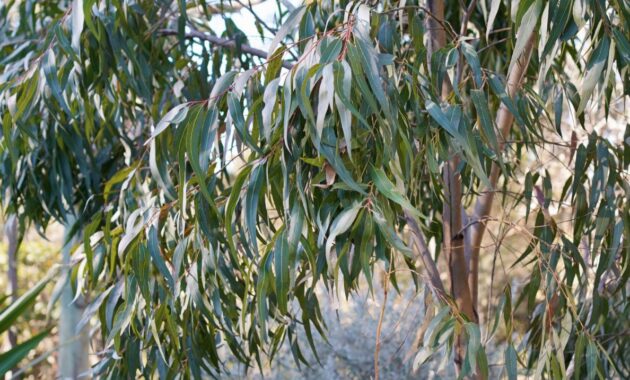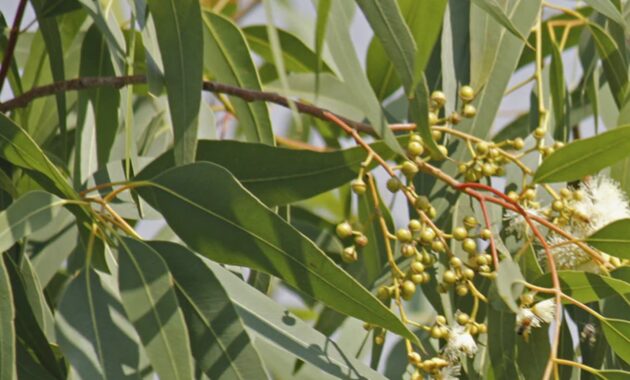
Eucalyptus is one of those plants that immediately conjures up images of soaring trees and the fresh, invigorating scent that hits you when you crush its leaves. Known for its medicinal properties and its distinct aroma, this plant has become a staple in everything from essential oils to soaps and even natural remedies. But eucalyptus isn’t just a one-trick pony—it’s a fascinating plant that offers so much more than just its fragrance.
In this deep dive, we’ll explore all the uses, benefits, and even a few tips on how to grow this amazing plant. Whether you’re curious about its healing properties, looking to grow it at home, or just want to know why it’s so beloved, you’re in the right place.
Overview of Eucalyptus
| Feature | Description |
|---|---|
| Scientific Name | Eucalyptus (over 700 species, most common: Eucalyptus globulus) |
| Family | Myrtaceae |
| Common Names | Gum Tree, Blue Gum |
| Native Region | Australia, with some species in nearby islands |
| Plant Type | Evergreen tree or shrub |
| Height | Can range from 4-100 meters depending on species |
| Uses | Essential oils, medicinal, timber, ornamental, natural insect repellent |
| Fragrance | Fresh, menthol-like, medicinal |
My Journey with Eucalyptus
I’ve always been fascinated by plants with practical uses, and eucalyptus quickly became one of my favorites. The first time I really took notice of this plant was during a trip to Australia. I was walking through a national park, and I couldn’t help but notice the smell—it was so fresh, almost minty, but with a hint of something more herbal. The guide explained that it was from the eucalyptus trees all around us, and I was hooked.
When I got home, I was determined to learn more about this fascinating plant. I started experimenting with eucalyptus oil and even tried growing a small eucalyptus plant in my yard. Little did I know, this plant would become a key part of my daily life—not just for its healing properties, but also for its versatility in natural remedies and even as an insect repellent.
Benefits of Eucalyptus
1. Respiratory Health
The most well-known use of eucalyptus has to be for respiratory issues. Growing up, my mom always kept a bottle of eucalyptus oil around the house, and whenever someone had a cold, she’d whip it out like it was magic. A few drops in boiling water for a steam inhalation, and suddenly it felt like you could breathe again. Eucalyptus works because of a compound called cineole, which has powerful expectorant and decongestant properties.
Now, whenever I feel a cold coming on, I do the same. I’ll add a few drops of eucalyptus oil to my humidifier or even my shower. Trust me, it works wonders, especially during those stuffy, sleepless nights!
2. Natural Insect Repellent
Did you know that eucalyptus is also a natural bug repellent? I learned this the hard way during a camping trip where I forgot my usual bug spray. Thankfully, someone in my group had a small bottle of eucalyptus oil, and it worked just as well, if not better! Since then, I always make sure to have some on hand, especially during the summer months when mosquitoes are out in full force.
Eucalyptus oil contains citronellal, which is great for keeping insects at bay. Whether you use it in a diffuser or rub it on your skin (diluted with a carrier oil), it’s a great chemical-free option.
3. Pain Relief
This one surprised me, but eucalyptus is actually a great natural pain reliever. I first learned about it after a particularly tough workout that left my muscles aching. A friend suggested that I mix a few drops of eucalyptus oil with some coconut oil and use it as a massage oil. I was skeptical at first, but it really helped soothe my sore muscles. Eucalyptus oil has anti-inflammatory and analgesic properties, making it a perfect addition to any post-workout recovery routine.

How to Grow Eucalyptus: My Best Tips
Growing eucalyptus can be a bit tricky if you’re not in the right climate, but it’s definitely possible with a little care and attention. I started with a small eucalyptus plant, and while it’s not as tall as the giants you see in the wild, it’s still a beautiful addition to my garden. Here’s what I’ve learned along the way:
1. Choose the Right Variety
Not all eucalyptus plants are towering trees. Some species, like Eucalyptus citriodora (Lemon-scented Gum), are smaller and more suited for home gardens. If you’re limited on space, go for a dwarf variety. They’re just as fragrant and useful, without taking over your yard.
2. Sunlight and Location
Eucalyptus loves full sun, so make sure to plant it in a spot where it gets at least 6-8 hours of sunlight a day. If you’re growing it indoors (which you can!), place it near a sunny window. When I first tried growing eucalyptus indoors, I made the mistake of putting it in a shady corner, and it didn’t do well. Lesson learned: sunlight is key.
3. Watering
One thing I’ve learned the hard way is that eucalyptus doesn’t like soggy soil. It’s pretty drought-tolerant, so you don’t need to water it too often. In fact, overwatering is one of the most common mistakes people make with eucalyptus. Let the soil dry out between waterings, and make sure your pot or garden has good drainage.
4. Pruning for Health
Pruning is important to keep your eucalyptus healthy, especially if it’s growing in a pot. I trim mine back once a year to keep it from getting too leggy. Plus, those trimmed branches are great for drying and using in DIY projects or just as natural air fresheners around the house.
Practical Uses of Eucalyptus in Everyday Life
1. DIY Eucalyptus Shower Spray
If you’re looking to turn your shower into a spa-like experience, I highly recommend making a DIY eucalyptus shower spray. It’s super easy: just mix a few drops of eucalyptus essential oil with water in a spray bottle, and spritz it in the shower before turning the water on. The steam will carry the scent, and it’s like instant relaxation.
2. Eucalyptus Tea
Believe it or not, you can make tea with dried eucalyptus leaves. It’s great for soothing sore throats and clearing up congestion. Just steep the leaves in hot water for a few minutes, and enjoy. I like to add a little honey to mine for an extra soothing effect.
3. Freshen Up Your Home
One of my favorite things to do with eucalyptus is to hang a bunch of fresh eucalyptus branches in the house. Not only does it look beautiful, but it also naturally freshens the air. I usually hang some in my bathroom or near windows where the breeze can carry the scent throughout the house.
Different Types of Eucalyptus
With over 700 species of eucalyptus, there’s a lot to choose from! Some are better for essential oils, while others are more suited for timber or ornamental purposes. Here’s a quick breakdown of some of the most common types:
| Eucalyptus Species | Best Use | Key Characteristics |
|---|---|---|
| Eucalyptus globulus | Essential oils, medicinal | Fast-growing, iconic blue-green leaves |
| Eucalyptus citriodora | Insect repellent, ornamental | Strong lemon scent, ideal for gardens |
| Eucalyptus camaldulensis | Timber, ornamental | Adaptable, often found near rivers and wetlands |
| Eucalyptus radiata | Essential oils, respiratory aid | High cineole content, great for colds and congestion |
| Eucalyptus polybractea | Essential oils, natural remedies | Very rich in cineole, used in high-quality essential oils |
Final Thoughts: Why Eucalyptus is the Ultimate Plant
Whether you’re using it for its healing properties, to repel bugs, or simply to add a refreshing scent to your home, eucalyptus is a plant that keeps on giving. It’s low-maintenance, versatile, and has so many uses that it’s hard to imagine not having it around. From my own experience, eucalyptus has been a game-changer, whether I’m using it in natural remedies or just trying to create a peaceful, fragrant atmosphere in my home.
If you haven’t already, I highly recommend adding this incredible plant to your life. It’s one of those plants that once you start using it, you’ll wonder how you ever lived without it!



